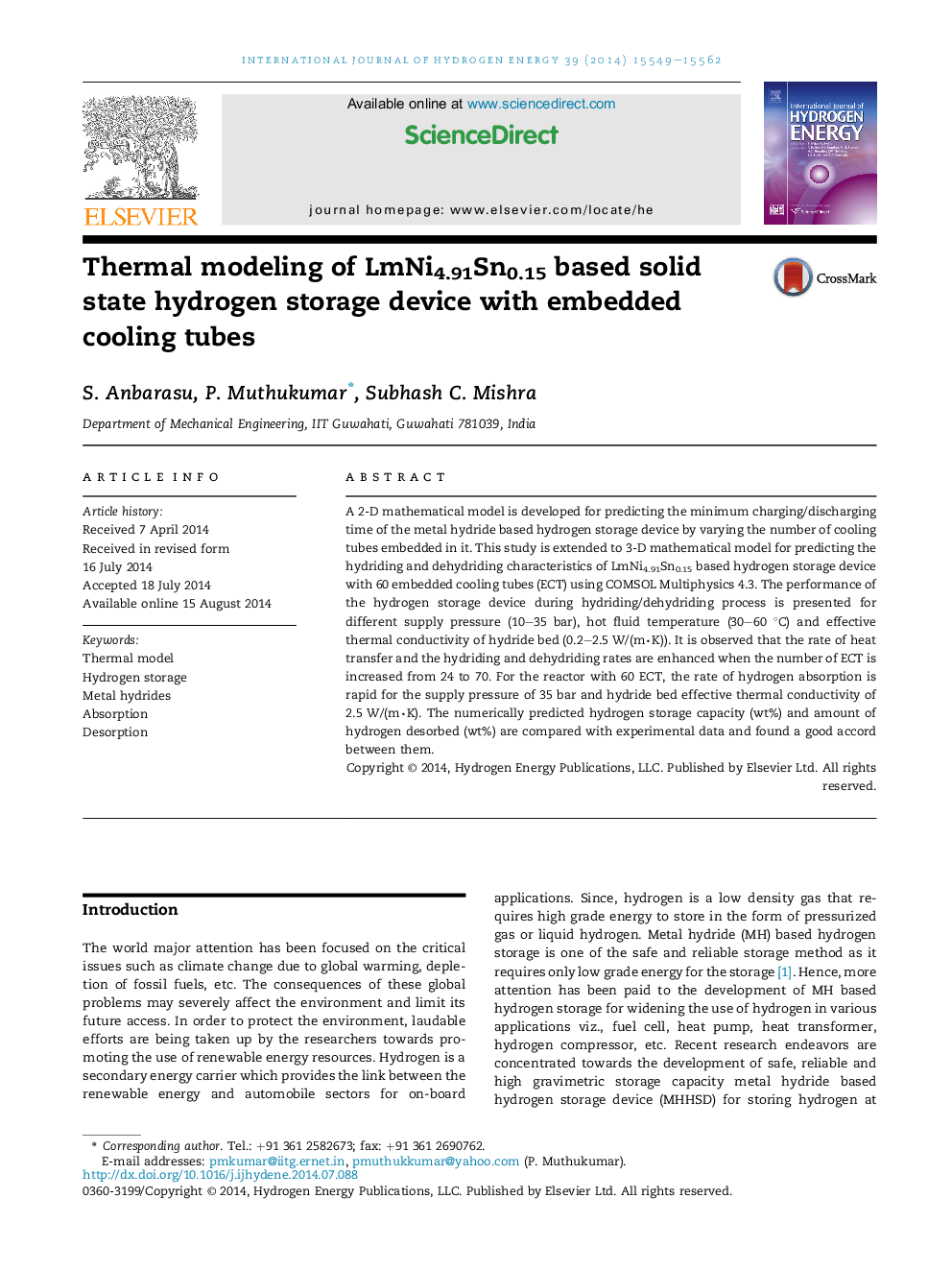| Article ID | Journal | Published Year | Pages | File Type |
|---|---|---|---|---|
| 1272392 | International Journal of Hydrogen Energy | 2014 | 14 Pages |
•Performance of MH based H2 storage device is predicted using 3-D thermal model.•Different configurations of embedded cooling tubes (24–70 ECT) are considered.•Number of ECT is optimized based on the minimum hydriding/dehydriding times.•Parametric studies are presented during both hydriding/dehydriding processes.•Higher effective thermal conductivities yield shorter hydriding/dehydriding times.
A 2-D mathematical model is developed for predicting the minimum charging/discharging time of the metal hydride based hydrogen storage device by varying the number of cooling tubes embedded in it. This study is extended to 3-D mathematical model for predicting the hydriding and dehydriding characteristics of LmNi4.91Sn0.15 based hydrogen storage device with 60 embedded cooling tubes (ECT) using COMSOL Multiphysics 4.3. The performance of the hydrogen storage device during hydriding/dehydriding process is presented for different supply pressure (10–35 bar), hot fluid temperature (30–60 °C) and effective thermal conductivity of hydride bed (0.2–2.5 W/(m∙K)). It is observed that the rate of heat transfer and the hydriding and dehydriding rates are enhanced when the number of ECT is increased from 24 to 70. For the reactor with 60 ECT, the rate of hydrogen absorption is rapid for the supply pressure of 35 bar and hydride bed effective thermal conductivity of 2.5 W/(m∙K). The numerically predicted hydrogen storage capacity (wt%) and amount of hydrogen desorbed (wt%) are compared with experimental data and found a good accord between them.
